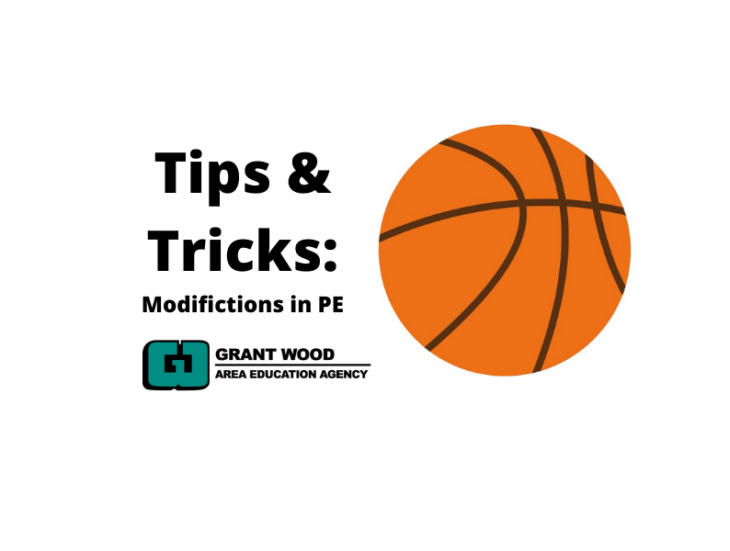
Odds are, your goal for PE lessons isn’t to make your students NBA players. Instead, we strive to meet each and every student where they are and not where we want them to be.
In many cases, you may have to adjust the outcome to fit the student's ability. Maybe the student can’t shoot the basketball into a 10 foot hoop, but they can shoot it into a 5 foot hoop. Is the goal to get students to make 10 baskets into a 10 foot hoop? Or is the goal to get the students to be aware of the body and its movements to improve coordination and manipulation skills? This type of thinking and recognizing your WHY for each lesson and activity could benefit all students, not just students with disabilities.
Making modifications for each student can be easier than you think. It could be as simple as giving them a choice in what ball they use, a choice between exercises that work the same group of muscles, different racquet or bat sizes, the choice between skill work, slow paced small sided games, to fast paced competitive games, etc. This type of differentiated instruction allows the higher ability students to work at their level and for the lower ability students to work at their level. It can have amazing outcomes for all students, including positive attitudes toward physical activity that empowers them to pursue a lifetime of health and wellness. Differentiated instruction can diminish behaviors, foster independence and allow for more opportunities for success.
This tip was published in the October version of the Adapted PE newsletter. To subscribe for more tips and tricks, email Adapted PE consultant, Rhyanne Hartwig.
